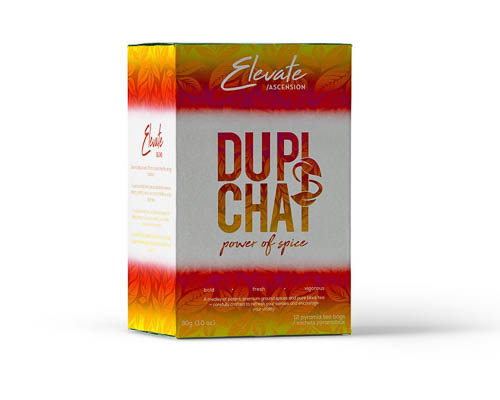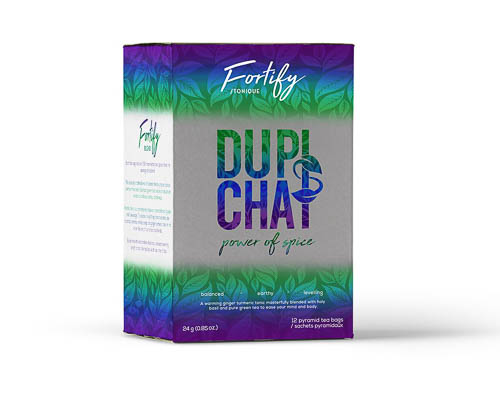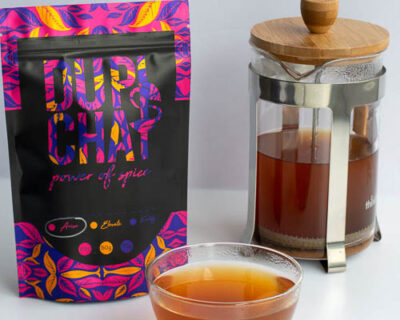In this comprehensive intermitted fasting guide, we’ll explore (from a personal and scientific view) how IF affects the body and the benefits that come with it, especially weight loss.
Throughout this guide, we have provided useful links to our line of IF-friendly Teas—feel free to visit our shop page.
IF GUIDE OUTLINE
Intermittent Fasting 101
Skip Breakfast For Sustainable Weight-loss
Your Body Is Adapted To Fasting
3 Different Types of Eating Windows
The (Science) behind IF and Weight Loss
Boost Metabolism & Focus
Burn Fat Not Muscle
IF as an Anti-inflammatory Aid
Is IF Safe For Women?
IF Necessitates Quality Food Choices
Drawbacks and Side Effects
IF Benefits Outweigh Drawbacks
Fasting Power of Spiced Teas
Is IF Right For You?
References


Weight-loss is the main reason many of us gravitate towards intermittent fasting (IF). Beyond just that, IF benefits extend to improved focus and energy, enhanced organ detox, healing illness and even reverse the signs of aging. [1]
Sounds too good to be true, right?
We thought so, until we experienced it for ourselves. As parents, in our 40s we’ve tested and tried many diets and lifestyle changes, and in the end have stuck to IF since 2013.
Fasting is an ancient tradition that is on trend not only in North America but worldwide. The medical literature on fasting is growing quickly with overwhelming majority showcasing numerous restorative health benefits.
With todays beyond 9-to-5 lifestyle, intermittent fasting (IF) has a strong appeal of convenience and application to any diet be it keto, palo, vegan and beyond. However, there are questions and myths regarding fasting such as starvation mode, low energy, muscle loss, and skipping the most important meal of the day—breakfast.
In this article, we’ll explore these topics (from a personal and scientific view), how IF affects the body and the benefits that come with it, especially weight loss.
Intermittent Fasting 101
Intermittent fasting is not a modern fad or latest diet but, simply a way that you cycle between eating (feeding) and not-eating (fasting). The fasting periods are flexible and up to each individual.
Some people fast daily restricting a feeding window anywhere from 2 to 12 hours. Others prefer to do a full 24 hour fast every other day. There are weekend (48 hour) fasts where you may consume minimal (500) or no calories.
Mistakenly IF gets confused with starvation, but there is a difference.
Starvation is the uncontrollable absence of food. Meaning, there’s no food in sight and unknown when it will become available. Fasting is simply a withholding of food on purpose with a set end time. [14]
Also, there are no hard and fast rules with fasting regarding specific times. We simply enter a fasting state each time we’re not eating. For instance, overnight period between dinner and breakfast the next day may be 10-12 hours, and in a sense we all IF daily.
This restricted time eating compliments our genetically evolved energy production and storage mechanisms, thus carries numerous health benefits. The body is well equipped to perform in a fasted state for a long time. Modern record is 382 days where a man lost 125 kg (276 lbs) with no negative side effects. [2-3]
Skip Breakfast For Sustainable Weight-loss
Have you ever felt that you’re just not that hungry when you wake up?
If so, you’re not alone.
Many of us don’t feel like eating in the morning but, believe that we should. It has been ingrained in us that breakfast is “the most important meal of the day” and skipping it ignites hunger, messes up hormones, leading to constant overeating and weight gain.
Breakfast studies often scare us with associating factors of how not eating it may jeopardize our health. [4-6] But, a closer look at the research data shows inconsistencies that don’t add up.
It’s important to remember the difference between association and causality. Majority of pro-breakfast research uses vague language describing associating factors, not causing factors. [7] These papers either review science experiments or collect questionnaires from people of various walks of life, medical history, stress levels and many other factors which make us different and unique.
Compiled information from such case-studies is often dispersed and shows no particular pattern. Researchers that analyze such data draw loose associations between not eating breakfast and weight gain or development of some kind of disease. [5-6]
Afterwards, these interpretations are marketed as “scientific proof” which is far from facts that fail to show any causation or protective effects to eating breakfast. Furthermore, many reports are skewed, bias and often sponsored by the big food companies who have a direct profit gain for favourable results.[7]
The truth is that there’s nothing special about breakfast. Breakfast literally means, first meal that breaks the fast. Fasting research examines timed eating patters including when to have the first meal.
Current analysis shows that skipping breakfast will not make you gain weight [1,8] or diminish metabolism. [1,9] The message here is “listen to your body”. If you don’t feel like eating first thing in the morning, then keep fasting and extend your first meal for few hours around lunch time.
And, if you are hungry?
Then, go ahead and have nutrient-rich foods to break your fast, but finish the feeding window earlier and forgo dinner. This is the beauty of IF; as it is flexible and adaptable to any schedule or metabolic clock.
Skipping dinner holds its own benefits including decreased appetite, greater fat burn and weight loss that can be maintained long term. [10-12] Few larger meals consisting of quality fats, carbs and protein eaten during the day increase metabolic activity better than multiple smaller meals and snacks. [13]
This misconception of frequent eating being healthy works against us, as extra energy isn’t burned but rather stored on the waistline.
Your Body Is Adapted To Fasting
Fasting is engraved in us. Throughout 300,000 plus years of evolution as a species, we developed brain size and cognitive capacity along with numerous systems necessary for survival. This includes eating various types of foods and ability to store energy for times of famine. [17]
Abstaining from food (or fast) carried over to the civilized world and became part of the oldest traditions and religious practices. Most religions including Buddhism, Christianity, Judaism, Islam and Hinduism perform various fasts. [14,16]
The health benefits associated with fasting became a popular healing practice in the ancient times such as Ayurvedic medicine and ancient Greece.
Hippocrates of Kos (460 – 370 BC) considered the father of modern medicine often prescribed fasting and cider vinegar to his patients. [15] Other famous Greeks including Pythagoras, Plato and Aristotle indulged in fasting protocols.
More recent figures like the Swiss physician and founder of toxicology Phillip Paracelsus preached fasting to be “the greatest remedy—the physician within”.
And, Benjamin Franklin himself was an IF believer and practitioner.
3 Different Types of Eating Windows
There are various types of IF protocols, but they all tend to fall under three main methods including: [16,18]
Alternate-day fasting: 24-hour alternating fast days between feeding. A Complete alternate-day fasting is when you eat no calories during fast days. A Modified alternate-day fasting entails consuming minimal calories (500 or so), less than 25% of daily energy needs during the fast.
Periodic fasting: Fasts that last longer than 24 hours at one time. The popular form of such timeline is the 5:2 diet where you eat regular schedule for five days and go into a two day fast by end of the week. Again, some people choose to consume no calories during fasting periods, while others take-in 500-600 calories (or up to 25% or daily energy intake).
Time-restricted feeding: These are daily fasts lasting less than 24 hours. Pushing or skipping a meal and extending the fast up to 14, 16 and even 20 hours each day is cycled with smaller feeding window. Such schedules are often easier to get used to and can be adjusted with internal circadian clock.
The Science Behind IF and Weight Loss
As our ancestors cycled between feast and famine, our body evolved in keeping a balance within internal systems. IF is a time-restrictive schedule between when you eat and voluntarily not-eat. [16] The body always maintains uninterrupted stream of energy by efficiently moving back and forth between feeding and fasting zones.
When we eat, the body breaks down ingested food into basic components such as energy, building materials and other nutrients. The excess calories are stored in forms of body fat (triglycerides) and sugar (glycogen). During fasting, the process is reversed as the body taps into its energy stores to maintain all metabolic needs. [1,18]
During feeding, the macro and micro nutrients from ingested foods are then absorbed thorough the digestive tract into the blood stream. Carbohydrates are separated/converted into glucose and then stored as glycogen (strings of glucose molecules) inside muscle (~2% of total weight), heart (~2%) and liver (~6%) accordingly. Smaller amounts of glycogen are also housed inside the brain (non-neuronal glial cells), kidneys, red and white blood cells, and even some fat cells. [19]
Glycogen requires water for storage. One part of glycogen needs three parts of water, making it large and heavy. [19] Once glycogen stores are full, the body keeps on storing energy, but in form of fat. This includes digested fatty acids and excess glucose that is converted to fat inside liver through de-novo lipogenesis. [20]
Fat is stable, low maintenance and stores easily throughout the body. While glycogen stores are limited, fat can be stored indefinitely within numerous cells and tissues. [20]
The feeding and fasting processes involve numerous hormones which partake in metabolic balance. Eating food releases insulin hormone into the blood stream. Insulin is the body’s switch that triggers energy storage phase by shuttling excess glucose out of the blood and into cells to be packed away as glycogen. The body can access glycogen much faster than fat and it can be used with or without oxygen.
Fasting lowers insulin levels and reverses the body’s energy shift from storing to using its storages.
Fat burning begins with glycogen breakdown into glucose (process called glycogenolysis) which then uploaded in to the bloodstream and delivered to cells. After about 12-24 hours of fasting the body begins to transition from glycogen to fat.
The switch is gradual as fat burning overlaps glycogen usage around 12-36 hours of the fast. [21] In doing so, the body activates numerous biochemical mechanisms which are dormant during high insulin state of frequent meals and snacks. [21,22]
Flavour: Cafe Tea Latte (prominent Star Anise and Nutmeg Tea)
Function: 5-Spice Gut Support Blend (1,250 mg spices / teabag)
- Black Tea helps weight-loss, improves good gut bacteria.
- Ginger eases stomach pains, improves digestion.
- Cinnamon balances blood sugar levels.
- Cardamom combats harmful bacteria.
- Nutmeg soothes the gut, enhances digestive processes.
- Star Anise stops dangerous bacteria.
IF Boosts Metabolism & Focus
Myths and popular beliefs regarding frequent eating (every three hours or so) promise continuous energy, less hunger and increased metabolism. But, constant food consumption doesn’t jive with our energy systems which evolved through hundreds of thousands of years of feeding and famine periods.
Larger meals with less frequency actually lower appetite and keep hunger at bay better than same amount of food eaten in smaller portions more often. [23] During the fast, the appetite hormones (ghrelin and leptin) don’t skyrocket but remain stable along with blood glucose and metabolic rate. [1,9,24-25]
Studies show that fasting actually boosts metabolism.
This is seen in both men and women. [24-26] Absence of food adjusts metabolic hormones (low insulin and high norepinephrine) and shifts energy production from fat reserves. Metabolism increases up to 13% during initial fasting periods as the body burns more fat and reshapes its energy source distribution. [27]
IF also has positive effect on the nervous system and brain function by increasing brain-derived neurotrophic factor (BDNF). BDNF is a key player in nerve cell growth, brain function and cognitive skills. Higher BDNF levels enhance memory, improve mood and recovery from brain related injuries. [28] BDNF is also an important protector against neurodegenerative disorders like Alzheimer’s. [28-31]
Flavour: Classic Masala Chai (prominent Cinnamon and Ginger Tea)
Function: 7-Spice Brain Support Blend (1,250 mg spices / teabag)
- Black Tea promotes blood flow, cognition, focus and attention.
- Cinnamon improves brain nourishment, boosts cognition.
- Ginger improves focus, memory, mood and response times.
- Cardamom reduces anxiety, enhances nerve cell growth and development.
- Cloves fights brain inflammation, elevates memory and learning.
- Fennel Seeds decreases oxidative stress, enhances memory and brain function.
- Black Pepper increases brain cell communication, antidepressant agent.
- Coriander Seeds calms the brain, improves memory, natural headache remedy.
IF Burns Fat Not Muscle
As a powerful weight loss strategy, 85% of the IF research shows significant decrease in bodyweight, both in animal and human models. [18]
There are few things to consider:
- Having a smaller eating window results in less consumed calories.
- The body maintains a constant level of sugar in blood circulation and supplements it from our storages when we eat less food. [19,27]
- Hormonal adjustments (low insulin) initiate glycogen breakdown due to its faster accessibility for the first about 24 hours. [1,21]
- As glycogen stores reduce to specific threshold, the body transitions to using body fat to power all the metabolic processes. [21-22,24-25]
- Fat lost during fasting is the harmful visceral kind (deposited around the belly and organs) which puts us in greater risk for numerous metabolic diseases. [18,32]
- One of the big factors with IF weight loss is longevity; as more people are able to take off the weight and keep it off. The other part is that the body burns fat as energy while maintaining lean mass. [33]
What happens to the muscle when we don’t eat?
It stays where it is.
This makes perfect sense from evolutionary standpoint. Muscles produce force and all body’s physical movements. Muscle tissue is a very expensive metabolic project that takes a long time to make (tissue growth), requiring tremendous efforts (strength/resistance exercises) and great investments (lot of nutrients and energy).
Then why would the body destroy all this hard work just for additional energy during fasting?
As an active tissue, muscles are what kept us alive by chasing down a meal or running away from predators. Hence, burning muscle as energy would place survival of our species in great danger.
The truth is that muscle mass isn’t burned during fasting and remains intact for long periods. Once again the system maintains balance by reconfiguring series of hormones including human growth hormone (HGH).
HGH often released during deep sleep for repair and recovery tasks also plays major roles in fat burning and muscle building mechanisms. Fasting greatly amplifies HGH levels as much as 5-fold, further reducing waistline size while maintaining muscle and bone. [42] Fasting (from 16 to 36 hours) including physical training found no evidence of muscle loss. Fitness programs ranged from causal exercise and athletic resistance training in fasted state all maintained lean mass while burning body fat for fuel. [1,26,32-35]
Our personal experience agrees with current studies. Since 2013, we at DUPIsCHAI have been experimenting with various IF protocols that included physical activity. For over seven years, various exercise programs were tested in a fasted state leading to a steady weight loss of body fat but not muscle. [36]
Victor gradually lost 62 lbs (30 kg), majority being body fat, while increasing muscle mass within the last two years. The proof is in the pudding, so to speak, as the body once again continues to adapt to eating styles and physical activity.
BEFORE



AFTER



IF as an Anti-Inflammatory Aid
Our food, air, environment and daily stressors of life all contribute to the production of free radicals inside the body. These unstable molecules sporadically react and damage working tissues and compounds inside cells.
The immune system responds with inflammation by raising a series of inflammatory protein factors and messengers. To counter this destructive cascade we eat antioxidant rich foods, exercise, practice relaxation and sleep hygiene.
Another avenue of reducing inflammation is fasting. Fasting periods significantly reduce key inflammatory markers, decrease oxidative stress and improve insulin sensitivity. [1,18]
Metabolic syndrome is an umbrella term for illnesses associated with insulin resistance and chronic inflammation. Together these factors contribute to all modern diseases including cancers. [37,38] IF can be a powerful tool for patients suffering from conditions like diabetes, obesity and cardiovascular disease (CVD).
Eating earlier in the evening and extending a nightly fast improves sleep, reduces stress and chronic inflammation while lowering risk for CVD, type 2 diabetes and breast cancer. [37] Fasting alone produces substantial weight loss in type 2 diabetics and reverses insulin resistance. [38]
Flavour: Green Chai (prominent herbal with touch of green tea)
Function: 5-Spice Immunity Support Blend (1,250 mg spices / teabag)
- Green Tea supports immunity and restorative processes.
- Tulsi (Holy Basil) fights chronic-inflammation and reduces stress.
- Turmeric reduces inflammation, improves immune response.
- Ginger combats oxidative stress, elevates organ and detox systems.
- Cinnamon reduces allergic reactions, combats inflammation, and boosts immunity.
- Fennel Seeds decreases allergies and inflammation, reduces infectious bacteria.
- Black Pepper improves immune system, helps absorption of other powerful ingredients.
Is IF Safe For Women?
Women experience the same health benefits from fasting as men including on-par weight loss. [1,18,21-25,39,40] Women’s response may differ due to hormonal variance and further tweaking of fasting times may be needed. This is a good advice in general as we’re all unique and may need some feeding adjustments for better lifestyle fit.
At Dupi’s Chai, Dupi has been fasting for over 5 years and initially identified a larger eating window (10:14 – only fasting for 10 hours) that worked better with her body and schedule. As the body adjusted, kids grew up and work schedule modified she increased her fast to 12 hours, than 14 and now landed at 16 for the past year or so. Often her weekend fasts are 6:18 as it naturally fits better with her work/life schedule.
There are some exceptions and cautions. Women who are underweight, pregnant or breastfeeding should not fast. Low body fat may cause irregular periods or trouble conceiving a child. [41] As always, consult your doctor before trying any new diet strategy.
We explore this topic in depth here: Intermitted Fasting – Women and Hormones
BEFORE



AFTER



Effective IF Necessitates Quality Food Choices
Intermittent Fasting is a flexible eating pattern that can be adapted to any diet or lifestyle. If you like breakfast, have some eggs and porridge but simply delay it for a few hours. [8-12]. Or, you can start consuming food in the morning and cut off earlier in the evening. Fast every other day, or only on weekends. You can eat three square meals a day, or simply combine them into two, or one. It’s up to you. Cooking is also simplified, as there are fewer meals to prep and clean up.
The trick to fasting, it works well when combined with nutrient dense foods; which are real, whole foods. Limit processed foods (be it carbohydrates, fats or protein) while increasing fiber intake.
Fiber improves digestion and good gut bacteria while reducing insulin resistance and related risks for metabolic disease. [43,44] Fruits, vegetables, seeds, legumes and oats are good examples of nutrient dense, fiber rich foods. They also contain variety of minerals and vitamins, many of which double as antioxidants to combat free radicals and reduce oxidative stress.
Try not to consume any food during your fast. Drink water, coffee and tea without any creamer or sweetener. Coffee and teas (caffeinated or herbal) contain very minimal macronutrients which do not noticeably elevate blood insulin, hence keeping you in the fat burning state. Finish eating a few hours before bed time and boost sleep quality while reducing anxiety, inflammation and risk for numerous disease symptoms. [37]
At Dupi’s Chai, our teas are spice-forward for the health benefits of metabolism boost, micronutrient profile and many others. Furthermore, they are flavourful and tasty just simply steeped in hot water.
Not all IF-Teas are created equal as many companies shortchange their versions of this traditional drink using flavours and sprays to create the feel without substance.
Health benefits of chai come from wide range of active ingredients found within spices and herbs.
These ingredients possess compounds called polyphenols which are released during the brewing process.
A chai tea with purpose and more benefits must be:
- High Quality and Quantity of Ingredients: no dust, presses or extracts.
- More Spices: as most potent superfoods, spices are what give chai its benefits.
- No Sugar: #1 ingredient in most chai blends, sugar and/or substitutes have been linked to cascade of health issues and should be avoided.
- No “natural” or artificial Flavours: majority of Chai tea brands spray their blends with spice essence, flavours and alike rather than adding real ingredients. Cost saving strategy for them and no health benefits for you.
Drawbacks and Side Effects of IF
When attempting something new, there is always a transition period that includes discomforts and possible side effects.
Here are some of the drawback when starting IF:
- Feeling Hungry: the most common issue for many. Like everything inside the body, hunger is a hormone controlled system which comes in waves of predicted eating pattern. By changing eating times, the body still releases hunger hormones according to the “old” schedule. Best way to deal with hunger is to ride out its waves. Also eating more satiety foods which include fiber, fat and protein during feeding times reduces this sensation. We prefer to curb the hunger and stay hydrated with Dupi’s Chai flavourful spiced tea.
- Dizziness: often associated with dehydration, so drink plenty of water. Adding some salt/electrolytes is important for muscular and neural function. That usually does the trick.
- Muscle Cramps: this is also due to dehydration, so consume fluids. At times low magnesium, potassium and salts can also cause muscle cramps. A daily multivitamin or appropriate mineral supplement should resolve the issue.
- Headaches: common at the beginning and should disappear after few fasting days. Again, drink water and increase your salt intake. Many spices have also shown to relieve headaches so, we are avid Dupi’s Chai drinker during feeding and fasting time.
- Constipation: may happen as you’re eating less food and changing eating times. Increased fiber from fruits, vegetables, legumes or supplementing Metamucil helps to absorb water and improve the situation.
It’s important to remember that you should always consult your doctor, especially if being treated for a medical condition, taking medication or monitored by a physician.
IF Benefits Outweigh Drawbacks
Besides extensively documented weight loss, fat loss and improved metabolism, there are many other benefits that came to light during fasting research.
IF benefits include:
- Muscle maintenance: up regulation of hormones like HGH that raise fat burning while protecting lean mass. [42] Employing strength training further ignites metabolism leading to muscular hypertrophy (growth) .
- Improved insulin sensitivity: decrease and at times reversal of symptoms in type 2 diabetes, obesity and cardiovascular disease patients. [1,37-38,45]
- Better cholesterol profile: maintaining the good (HDL) levels while reducing the bad (LDL) type. [46]
- Decreased inflammation. [1,18,28-31,37,38]
- Brain health: protection of neural cells through lower inflammatory factors and more BDNF. This also increases neuroplasticity and cognition skills such as focus, memory and clarity. [28-31,46]
- Improved mood and energy. [47]
- Increased cellular cleansing and repair: is called autophagy. An internal housekeeping mechanism where the body brakes down incomplete or damaged compounds (like proteins, organelles and cells) for energy to make repairs or new cells altogether. [46,48] This happens inside organs (liver, kidneys), tissues (muscle, cardiac) and systems (CNS) where malfunctioning cells and materials are stripped to their building blocks (amino acids from proteins; fatty acids from fats) and used as fuel during fasting.
- May increase longevity: shown to increase life span in animal studies. The process is not fully understood but believed that fasting initiates a series of complex mechanisms including—reduction of dangerous visceral (belly) fat, decrease of chronic inflammation, protection of DNA materials (telomeres within chromosomes), increase of insulin sensitivity and autophagy. These mechanisms overlap health benefits resulting in longer life and better performance. [49] Another hot topic is the energy production within the cell itself. Mitochondrion is cellular power-plant often housed in various quantities depending on cellular design and needs. For instance, muscle cell has more mitochondria than skin cell. Latest studies show mitochondria in cells work together as a network and physiologically adjust to fasting producing more energy longer. [50]
Fasting Power of Spiced Teas
Chronic inflammation has been linked as a big contributor to many modern day conditions such as CVD, liver disease, insulin resistance, autoimmune deficiency and cancers. These illnesses are monitored through inflammation causing proteins (biomarkers). Fasting reduces multiple inflammatory biomarkers resulting in weight loss, hormone balance and amplified autophagy. [42]
Damaged or broken molecules inside the body pose an oxidative threat by creating free radicals, raising inflammation and the risk of illness. This is where autophagy shown as not only a recycling mechanism but a protective one. As damaged cells replaced with healthy ones, autophagy greatly reduces the risk of many conditions while improving multi-organ function and health. [48-51] It’s no wonder why autophagy is one of most popular research topics for metabolic and neurodegenerative diseases.
Black coffee and teas do not noticeably raise blood sugar and can be consumed during fasting. [52] Not only these drinks produce a more enjoyable and manageable fasting experience, but they make IF more effective.
Coffee and tea contain caffeine in various amounts which improves alertness, brain activity, and metabolism while reducing cellular oxidation. [52-55]
Besides caffeine, coffee and tea possess polyphenols; compounds that act as potent antioxidants and enhance health benefits even further. [56-58] From healthier gut microbiome, greater fat burn and organ activity, less disease symptoms, improved immunity and longevity—polyphenols positively affect all such processes.
We’ve all been told to eat more antioxidant rich foods. Often called superfoods, products like fruits and vegetables contain many powerful polyphenols, with the highest levels found in spices and herbs. [59]
Like coffee and tea, spices do not noticeably affect blood sugar levels while boosting fasting experience through minimizing hunger, firing up metabolism and burning a lot of fat. [60]
At Dupi’s Chai, we merge the knowledge of ancient medicines with modern science to create powerful superfood blends containing potent polyphenol-rich spices and teas that are flavourful, diet flexible, easy and convenient.
Adding Dupi’s Chai teas can amplify fasting benefits like boosting immunity and autophagy [61], brain function [62] and gut health [63].
Is IF Right For You?
As intelligent mammals we always look for ways to improve our health, increase productivity while simplifying our lives. Often it includes thinking about strategies regarding what to eat, how much and how often. Enter Intermittent Fasting.
IF is not a modern diet hack but an ancient practice of religious ceremonies and traditional medicines. The intermittent part conveys cycling periods between eating food and, resting and digesting.
The body regulates digestion, nutrient uptake and production of energy through series of metabolic hormones. Insulin is the hormone that switches the body into energy storing phase by removing excess glucose from bloodstream into cells forming glycogen and fat.
Fasting reverses the storing process as the body begins to use its reserves to fuel all activity. IF raises metabolism, burns body fat while preserving muscles and bones. Along with smaller waistlines IF comes with numerous other benefits including better insulin sensitivity, hormone balance, greater organ performance, less inflammation, and lower risk of many diseases.
Flavourful and micro-nutrient rich teas maintain fasting benefits and make the process more enjoyable by minimizing hunger cravings. Polyphenols are potent antioxidants found in many foods, spices, herbs and teas further enhance health benefits of fasting.
Dupi’s Chai teas are a perfect combination of spices and teas containing potent polyphenols that curve hunger pains, elevate fasting experience, health and wellbeing while tasting delicious.
Connect with us on Social
We love helping customers reach their goals!
Share This Story, Choose Your Platform!
References:
- https://www.ncbi.nlm.nih.gov/pubmed/30202677
- https://en.wikipedia.org/wiki/Angus_Barbieri%27s_fast
- https://www.ncbi.nlm.nih.gov/pubmed/4803438
- https://www.ncbi.nlm.nih.gov/pubmed/23877060
- https://www.ncbi.nlm.nih.gov/pubmed/22456660
- https://www.ncbi.nlm.nih.gov/pubmed/23877060
- https://www.nytimes.com/2016/05/24/upshot/sorry-theres-nothing-magical-about-breakfast.html
- https://www.ncbi.nlm.nih.gov/pubmed/23672851
- https://www.ncbi.nlm.nih.gov/pubmed/24847666
- https://www.ncbi.nlm.nih.gov/pubmed/31180809
- https://www.ncbi.nlm.nih.gov/pubmed/31339000
- https://www.ncbi.nlm.nih.gov/pubmed/28701389
- https://www.ncbi.nlm.nih.gov/pubmed/27792142
- https://en.wikipedia.org/wiki/Fasting
- https://thefastingmethod.com/fasting-a-history-part-i/
- https://en.wikipedia.org/wiki/Intermittent_fasting
- https://en.wikipedia.org/wiki/Homo_sapiens
- https://www.ncbi.nlm.nih.gov/pubmed/25857868
- https://www.ncbi.nlm.nih.gov/pubmed/29444266
- https://www.ncbi.nlm.nih.gov/pubmed/30274245
- https://www.ncbi.nlm.nih.gov/pubmed/29086496
- https://www.bmj.com/content/364/bmj.l42.long
- https://www.ncbi.nlm.nih.gov/pubmed/26561409
- https://www.ncbi.nlm.nih.gov/pubmed/15640462
- https://www.ncbi.nlm.nih.gov/pubmed/31614992
- https://www.ncbi.nlm.nih.gov/pubmed/16051710
- https://www.ncbi.nlm.nih.gov/pubmed/10837292
- https://www.ncbi.nlm.nih.gov/pubmed/29321682
- https://www.ncbi.nlm.nih.gov/pubmed/16011467
- https://www.ncbi.nlm.nih.gov/pubmed/31970058
- https://www.ncbi.nlm.nih.gov/pubmed/17306982
- https://www.ncbi.nlm.nih.gov/pubmed/24993615
- https://www.ncbi.nlm.nih.gov/pubmed/27569118
- https://www.ncbi.nlm.nih.gov/pubmed/27737674
- https://www.ncbi.nlm.nih.gov/pubmed/21410865
- https://www.ncbi.nlm.nih.gov/pubmed/29315892
- https://www.ncbi.nlm.nih.gov/pubmed/27032109
- https://www.ncbi.nlm.nih.gov/pubmed/26305095
- https://www.ncbi.nlm.nih.gov/pubmed/23591120
- https://www.ncbi.nlm.nih.gov/pubmed/17413096
- https://www.ncbi.nlm.nih.gov/pubmed/9435419
- https://www.ncbi.nlm.nih.gov/pubmed/1548337
- https://www.ncbi.nlm.nih.gov/pubmed/23482058
- https://www.ncbi.nlm.nih.gov/pubmed/27098727
- https://www.ncbi.nlm.nih.gov/pubmed/30897855
- https://www.ncbi.nlm.nih.gov/pubmed/27810402
- https://www.ncbi.nlm.nih.gov/pubmed/24097021
- https://www.ncbi.nlm.nih.gov/pubmed/30172870
- https://www.ncbi.nlm.nih.gov/pubmed/30197301
- https://www.cell.com/cell-metabolism/fulltext/S1550-4131(17)30612-5
- https://www.ncbi.nlm.nih.gov/pubmed/30050669
- https://www.ncbi.nlm.nih.gov/pubmed/27026242
- https://dupischai.com/caffeine-naps-performance/
- https://dupischai.com/green-tea-health-benefits/
- https://dupischai.com/black-tea-benefits/
- https://www.ncbi.nlm.nih.gov/pubmed/31123432
- https://www.ncbi.nlm.nih.gov/pubmed/18228206
- https://www.ncbi.nlm.nih.gov/pubmed/24172301
- https://modernsurvivalblog.com/health/high-orac-value-antioxidant-foods-top-100/
- https://dupischai.com/anti-inflammatory-spices-herbs/
- https://dupischai.com/immunity-tea-fortify/
- https://dupischai.com/arise-tea-brain/
- https://dupischai.com/elevate-gut-power-tea/












Great post on IF and learning more about the inferiority of other chais. I’ve never been one to eat breakfast (unless hungry or up for a long time) and have spent decades hearing people tell me it’s not healthy to not eat. LOL I love that IF is such a big deal and backed by science!
Hello LindaLee,
Thank you for taking the time to comment!
Yes, many of us are simply not hungry in the morning but, due to poplar media it has been ingrained in us to keep on eating.
IF is really taking a lead as a sustainable lifestyle choice in recent years and we have been onboard for a while now.
In terms of Chai and teas in general, it’s more important than ever to have a look at the ingredients especially, if choosing for a wellness aspect.
For us, we didn’t like the added flavours, sugar and milk ingredients hidden in many chai blends so, decided to do it the right way. 🙂
Cheers,
Dupi